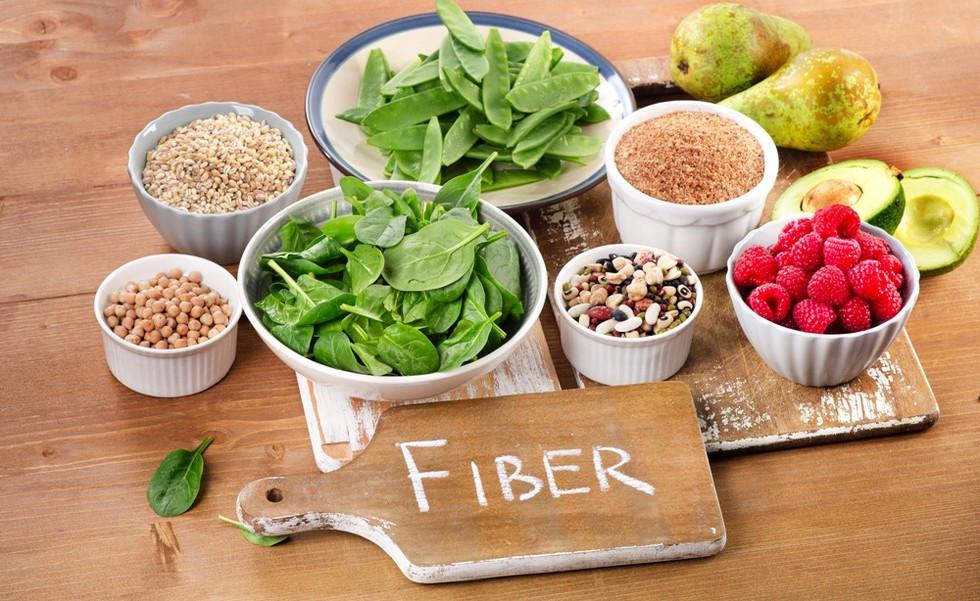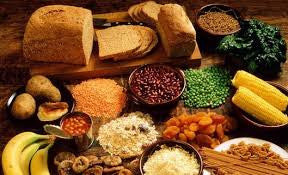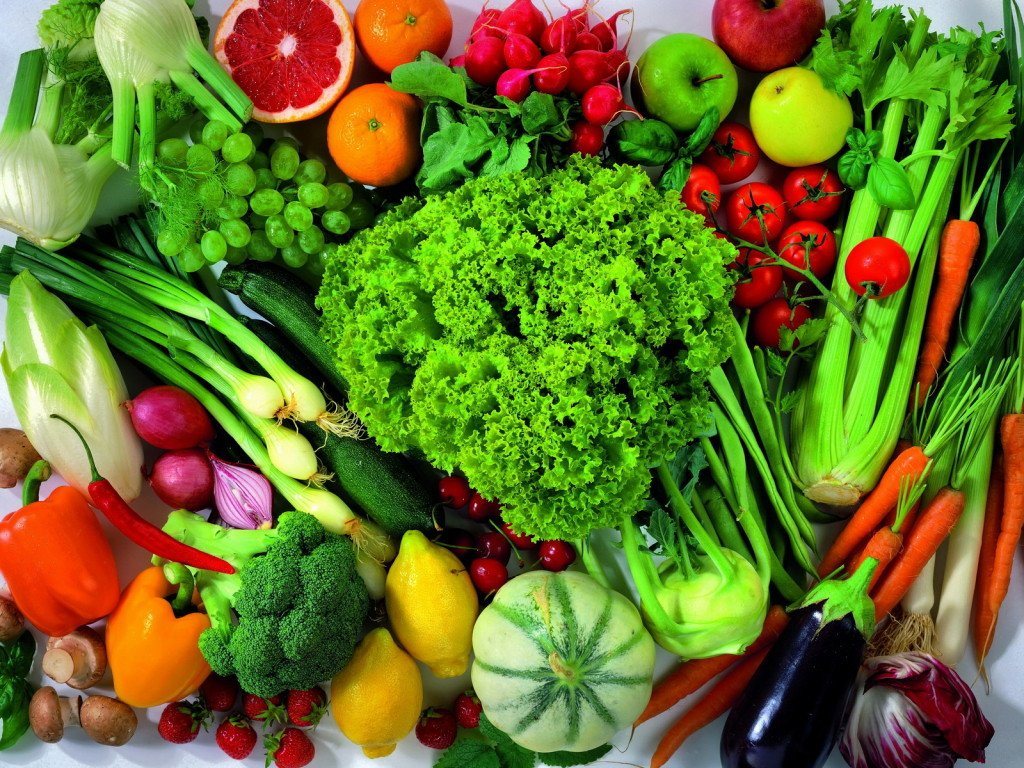


5 Ways to Maximise Your Recovery

5 Ways to Motivate Yourself

10 Health Benefits of Fiber

From parents to doctors to random health gurus you bump into during a walk in the park – it seems that everyone believes that placing fiber as a major component of your diet should be a top priority, without backing it up with evidence!
Well, not anymore!
We’re here to suggest and explain how and why adding more fiber to your diet will improve your health and give you a boost in your day-to-day performance levels. Plus, we'll also explain how fiber will help you tackle any challenges that life happens to be throwing your way!
What is Fiber?

Fiber comes from indigestible parts contained in veggies, fruits, legumes and whole grains (split peas, artichokes, peas, lima beans and more.)
There are mainly two kinds of fiber: soluble and insoluble. Soluble fiber breaks down in water and is known to help achieve normal cholesterol and blood glucose levels in the body. Foods rich in soluble fiber are apricots, oranges, mangoes, peanuts, kidney beans, black beans and more.
On the other hand, insoluble fiber does not dissolve in water – therefore it helps with preventing or relieving constipation and getting rid of irregular stool patterns. Some foods that contain high amounts of insoluble fiber are cauliflower, lentils, wheat bran, flax seeds and more.
Many foods carry both soluble and insoluble fiber. For the best results, opt to consume a high variety of fiber-rich foods.
Lowering Cholesterol Levels

Studies have shown that soluble fiber helps in lowering the “bad” cholesterol, or low-density lipoprotein levels.
Normalizing Digestion

Fiber makes it easier for stool to “pass over." It does so by increasing the size and volume by the dozen, thus relieving the time it takes for the stool to be pushed out. Fiber also soaks up water and solidifies the passable matter to transform watery stool into something you can “work with.”
Aiding in Colon Health

Going for a diet high in fibers can exponentially lower the risk of getting hemorrhoids or colon pouches (diverticular disease).
Battling Diabetes

A diet rich in insoluble fiber can significantly decrease the risk of succumbing to types 2 diabetes. Also, for those who are already affected with the disease, soluble fiber has shown to slow down the absorption of glucose into the bloodstream. This makes it easier for diabetics to control their blood sugar levels.
Stabilizing Blood Pressure Levels

The fiber found in flaxseed, oat bran, and black beans helps in lowering high blood pressure and also keeps inflammation at bay.
Helping the Heart

According to a study that appeared in the Journal of the American College of Cardiology Foundation, female subjects who consumed 26.3 grams of fiber on average were less likely to develop heart disease than those who ingested less fiber. The study followed exactly 39,876 women during the course of six years.
Assisting in Weight Maintenance

High-fiber edibles will satisfy your cravings faster and bring you up to a full belly quicker as opposed to foods low in fiber. Therefore, you’ll naturally maintain a healthy weight by opting for a diet abundant in both ends of the fiber spectrum (soluble and insoluble).
Preventing a Formation of Kidney Stones

We’ve already seen how fiber can help in maintaining normal blood sugar levels. This, in turn, lowers the chances of the body giving way to insulin spikes that can lead to developing kidney stones or gallstones.
Boosting the Immune System

According to top nutritionist Ann Louise Gittleman, Ph.D., CNS – fiber found in certain foods like flaxseeds can help flush down any toxins your body have accumulated and power up the immune system to effectively battle its way through the everyday hassle. This can particularly come to aid to post-menopausal women due to certain “lignans” in the “fibrous shell” that keep excess estrogen in check.
Trumping Stroke

A study has shown that total fiber intake was inversely proportional to the risk of developing a stroke. Additionally, increased fiber consumption lead to a significantly lower risk of developing the first stroke.
Conclusion?
In accordance with an HMD publication, adults aged 50 or younger should strive to ingest 38 grams of fiber for men, and 25 g. for women per day. Adults over the age of 50 should go for 30 g. for men and 21 grams of total fiber intake for women per day.
But before you start gobbling up legumes and munching on artichokes, remember that too much fiber entering the body at once could lead to bloating and unwanted gas. And you certainly don’t want to pass the wind while doing a powerpoint presentation in front of your biggest client now, would you?

Ten Foods That Have Detoxifying Benefits

Among the overabundance of so-called ‘cleansing’ diets currently available online, only a few offer real advice on how to detox your body without starving yourself to death. After all, the days when humans had to cross long distances while munching on just raspberries are long gone. Now, food is available just around the corner at countless markets worldwide. The only thing left for you to do is to come up with a bucket list, go on a shopping spree and hope that you’ll nail that diet right off the bat.
But what diet are we precisely talking about here?
Well, how about a diet that will have enough nutritional value, be healthy and tasty all at the same time? Is it possible? Of course it is! Take a look at what our editors came up with while searching for the best foods to naturally detox your body.
Broccoli

Broccoli is that veggie that somehow always ends up on top ten healthy lists. Why? Because it’s Mother Nature’s way of telling us that it is, mhm, healthy. Broccoli contains both substantial macronutrients (carbs, protein) and vitamins, so no wonder it’s the go-to mini-tree to detox your body.
And how does it do it?
Broccoli contains ingredients that work alongside your liver enzymes to transform toxins into an easily disposable material. Then, the processes in your body ‘push out’ the unnecessary waste for good. In simple words: broccoli makes everyone’s life a tad bit easier.
If you haven’t found a way to make broccoli taste great yet, try to steam-cook it, or even munch it raw. Whatever you do, don’t microwave broccoli since it tends to lose its detox properties.
Asparagus

Asparagus holds numerous benefits for the human body, like getting rid of toxins, battling against the cons of aging, aiding the cardiovascular system and more. But most importantly, asparagus helps the liver to filter any toxic waste quickly and more efficiently.
Plus, asparagus fights the biggest battle of them all – cancer. It reduces the risk of breast cancer and increases the chances to survive.
Beets

Beets usually find their way into a Greek Salad and other heterogeneous mixes that include a vast array of vegetables. But, on its own, beets are worthy of including into a detox diet because they do just that: cleanse the body.
Beets are important because they ‘flush’ the toxins out and more importantly – make sure that they don’t come back. Other foods may skip the latter and this is when the toxins get reintroduced back into the organism. With beets, once they go out – they never come back.
Plus, beets help in keeping free radicals in check, thus helping even further in keeping your body at a permanent homeostasis.
Dandelion Root

Now here’s an unconventional one: dandelion roots can help in cleansing just as well. While not ‘food’ unto itself – you can opt for dandelion spices to spark up your meals a notch.
Most plant aficionados refer to dandelions as a weed, but that should not stop you from trying something new in your diet. The plant has several healing factors, one of which is aiding the liver to do its cleansing work. And why wait for the last moment? Include dandelion roots in your diet now and your body will thank you later.
Blueberries

Yes, those tiny little spheres that everyone loves. So why all the hassle? Blueberries have a natural form of aspirin that prevents inflammation and lessens pain. As argued by a published study – 300 grams of blueberries helped in decreasing DNA damage in cells by 18%.
And if this wasn’t enough, blueberries also aid in stopping bacteria in the urinary tract. They feature antibiotic, as well as antiviral properties. Blueberries aid to the detox process thanks to a form of phytonutrients dubbed as ‘proanthocyanidins’ which they contain.
Ginger Root

This root is associated with many medicinal benefits and is known to have astringent properties (aiding in a sore throat, acne.) It also helps in liver functions and speeds up the detox processes that occur naturally in the body.
There are countless ways to prepare ginger. One of them requires you to munch on ginger roots solo. Other diets recommend ‘spicing’ up your water with ginger to taste better. Whichever way you prefer, you cannot do wrong with this one.
Fennel

Fennel is rich in vitamin C which directly supports the immune system of the body. It also sports decent amounts of vitamin B – a crucial ingredient in transforming the homocysteine molecule into other molecules to prevent inflammation.
In addition to that, the fennel bulb also contains a decent amount of folate and fiber, which help the digestive process in the body to do its job.
Avocado

Granted, the avocado contains some fat but is nevertheless great for detox if you know how to go about it. It also possesses antioxidant factors and a high amount of fiber to aid in digestion. The highlight here is to opt for an organic one and avoid cheap guacamole sauces from fast-food chains. This way you’re making sure that you’re getting all the benefits from the juiciness that is the avocado.
Garlic

Garlic is crucial for any diet. It heightens the immune properties of the body and helps with the liver. It is high in sulfur, meaning it’s good for detox and repelling bacteria. Recently, garlic was shown to have better antibiotic properties than most over-the-counter antibiotics, which is pretty neat.
Olive Oil

When you’re hurrying to detox your body, substitute regular (sunflower) for olive oil. Upon using, however, make sure you’re not cooking it at a high temperature. An ideal situation would be to put some in your preferred salad or enrich the flavor of your main course by as little as few droplets of olive oil dressing.
The go-to olive oil would be ice-pressed, but if you’re having trouble finding one – go ahead and pick cold-pressed olive oil instead. Your body will be thankful.
Did you feel like we missed something? Share with us in the comments!

The Ultimate Acne Hack



